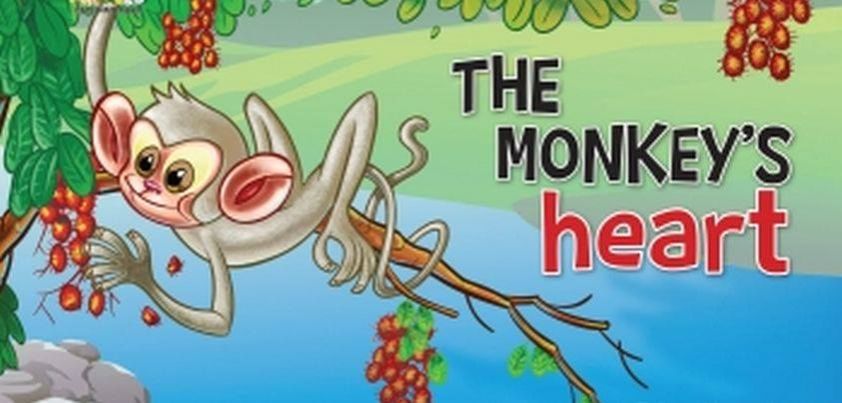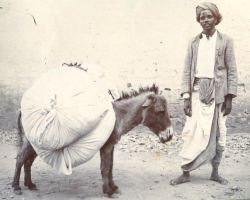 In this Swahili folktale, a monkey accepts the offer of a ride on a shark’s back to see the wonders under the sea. Once at sea, the monkey learns that the real reason for the trip is that the shark king needs a monkey’s heart to cure an illness. The monkey tricks the shark into returning. He then explains the trick by telling a story about a donkey, a hare, and a lion. One of the animals kills another. The third animal cooks it, but tells the killer there is no heart. Can you match the animals to the outcome?
In this Swahili folktale, a monkey accepts the offer of a ride on a shark’s back to see the wonders under the sea. Once at sea, the monkey learns that the real reason for the trip is that the shark king needs a monkey’s heart to cure an illness. The monkey tricks the shark into returning. He then explains the trick by telling a story about a donkey, a hare, and a lion. One of the animals kills another. The third animal cooks it, but tells the killer there is no heart. Can you match the animals to the outcome?
Our source for the story was The Lilac Fairy Book, one of a series of twelve collections of folk and fairy tales for children edited by Andrew Lang. This is the last book in the series, and was first published in 1910.
Original Text / PDF (3,093 words)
General Comments
This story is good example of how folktales can sometimes be hard to understand if we think of them only in terms of our own culture. In the West, the heart is a symbol for either love or bravery. This story does not make sense if you think of it in either of these terms. In parts of Africa, the heart is thought to be the center of intelligence. In some versions of this story, you may find that the word ‘heart’ has been changed to ‘brain’.
The Swahili live on the East coast of Africa in the coastal regions of modern day Kenya and Tanzania. Throughout history they have had strong links with Muslim and Indian traders from the North. Several things point to The Heart of a Monkey being influenced by Eastern writings:
- As well as the shark’s use of the term sultan in referring to his ruler, the structure of the story (a main story with other stories told within it) is common in Asian works. The best known example of this would be The Arabian Nights.
- The main story here, which deals with the action between the monkey and the shark, is very similar to two famous Indian folktales: The Monkey’s Heart, story 208 of the Jataka Tales, which record previous lives of Gautama Buddha; and The Monkey and the Crocodile, the main story in Part IV of the Panchatantra, an ancient set of animal stories designed to teach moral values to children.
The Monkey’s Heart Original Text / PDF (621 words)
The Monkey and the Crocodile Original Text / PDF (1,494 words)
Although there are quite a few Eastern folktales that talk about washerman’s donkeys, I haven’t as yet found one that might be a source for the second part of Heart of a Monkey. However, it is interesting to note that the Swahili word for a person who does laundry is dobi, which could well have originated from the Hindu term for a washerman, dhobi.
 In the past it was common to see Indian dhobi leading donkeys around as they collected or returned laundry. Because a dhobi’s work involved touching dirty clothes, they were members of the lowest social class in the Hindu caste system, known as the dalit or ‘untouchables’.
In the past it was common to see Indian dhobi leading donkeys around as they collected or returned laundry. Because a dhobi’s work involved touching dirty clothes, they were members of the lowest social class in the Hindu caste system, known as the dalit or ‘untouchables’.
This folktale is said to be the origin of a Swahili proverb: Usinifanye “p’unda wa dobi.” (Don’t make a washerman’s donkey [= fool] of me.)